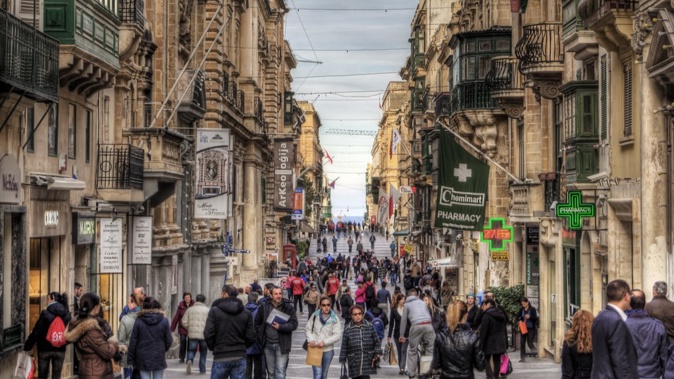
It’s one of the most southerly European nations – so far south that it’s parallel with Lebanon, Tunisia and Algeria. Malta has long been on my bucket-list and this relatively under-the-radar destination offers not only good-value for visitors, but it exudes astonishing scenery and historic treasures. I recently jaunted to Malta with Insight Vacations, who offer a fabulous introductory guided tour, spilling forth with Malta’s greatest hits.
As a premium tour operator, you’ll be cocooned in comfort with deluxe accommodation at the Waterfront Hotel in Sliema; sightseeing excursions are brought to life with top-notch local experts; and you’ll savour authentic Maltese cuisine. My entire 6-day experience was seamlessly woven together by my effervescent Insight Vacations travel director, Francis, whose passion for Malta was palpable. You’ll be in the best of hands.
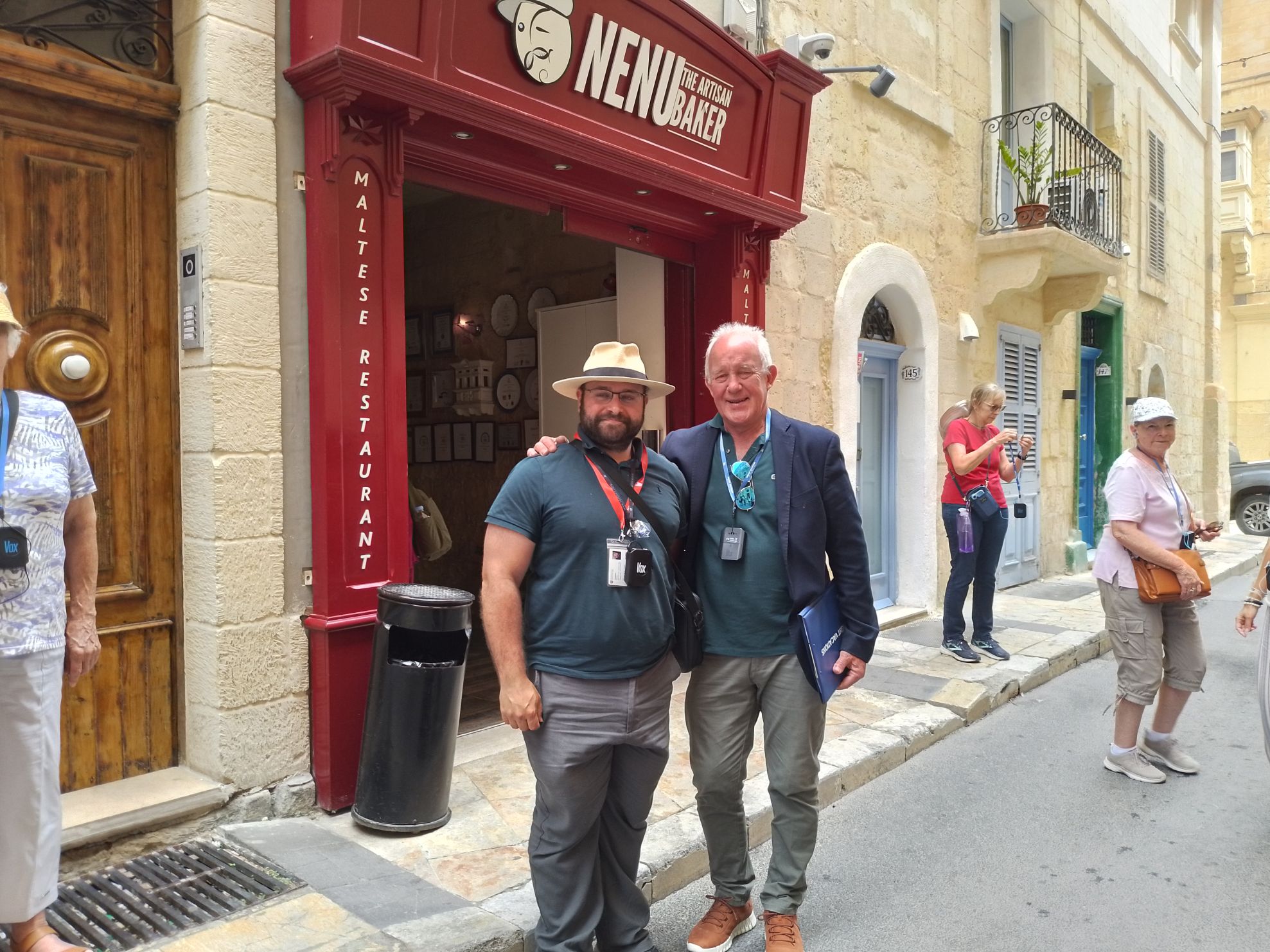 Insight Vacations guides, Francis and Gabriel. Photo / Mike Yardley
Insight Vacations guides, Francis and Gabriel. Photo / Mike Yardley
First impressions count and you’ll soon realise that Malta is one of the most fortified countries in the world. Successively built and rebuilt over 3000 years, right through to WWII, the fortifications underscore the Maltese islands' strategic position and natural harbours, which have made them a coveted target for numerous powers, over the centuries.
A runaway highlight of my tour was delving into Valletta, the Maltese capital. This sixteenth-century city has remained remarkably preserved, a grid of elegant townhouses with a view of the sea at the end of virtually every cobbled street. The sapphire blue of the Mediterranean contrasts with the golden-butterscotch of the city's limestone buildings. Constrained by a narrow peninsula, Valletta is perched up high with soul-flipping views over the sea on three sides. It sits above the aptly named Grand Harbour, the deepest natural harbour in the Mediterranean, in use at least since the Phoenician era.
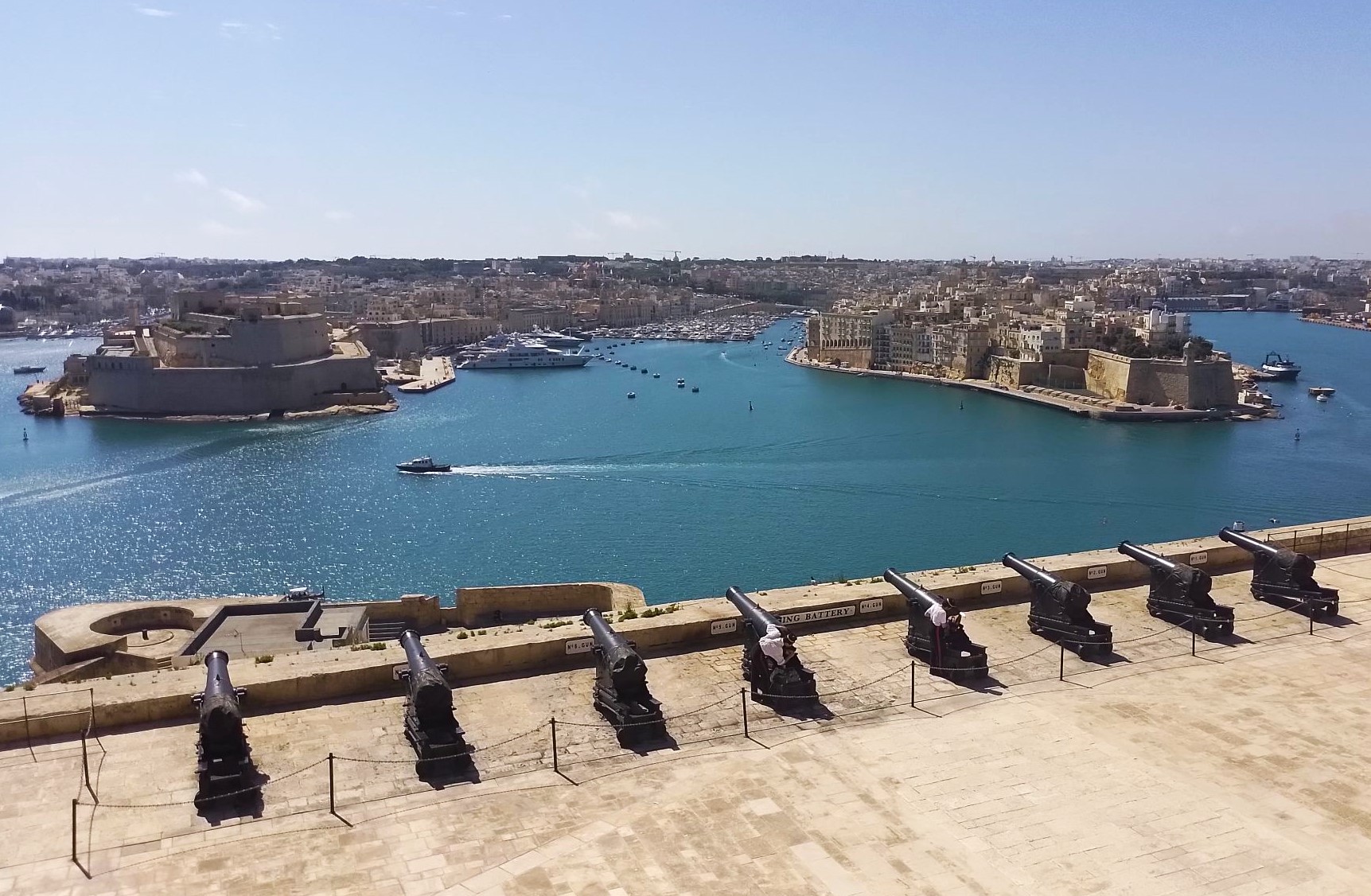 Battery overlooking Grand Harbour. Photo / Mike Yardley
Battery overlooking Grand Harbour. Photo / Mike Yardley
As we strolled the ornate streets, I was constantly struck by the ultimate symbol of Maltese architecture - the Maltese balcony, a fully enclosed brightly painted wooden balcony with glass windows, jutting out from the side of every floor of the multi-storey townhouses. As our local expert Gabriel remarked, rumour has it that the original purpose behind these structures was to give women a window on the world and to conceal them from the prying eyes of passing knights. These magnificent enclosed balconies were inspired from Arabic origins and the Ottomans embraced the design, as well.
Valletta is packed to the gills with splendid monuments, too. It was built as the Knights of Malta’s victorious capital after their David-and-Goliath victory against the Ottoman’s Great Siege in 1565. 700 knights and 8000 local troops overpowered 40,000 Ottoman Turks. I gleaned so many insights into the Knights of St John who were the military wing of the Order of St. John. Originally formed to care for sick pilgrims on their way to Jerusalem, the Knights of St John were part of the Christian Crusades against the Muslims. After being driven out of Israel, they first settled in Cyprus, before moving to Rhodes in 1310. However, after Rhodes fell to the Ottomans in 1523, the Spanish king gave them Malta as their new home in 1530. Valletta takes its name from the Grand Master of the Knights of St John, Jean Parisot de la Valette.
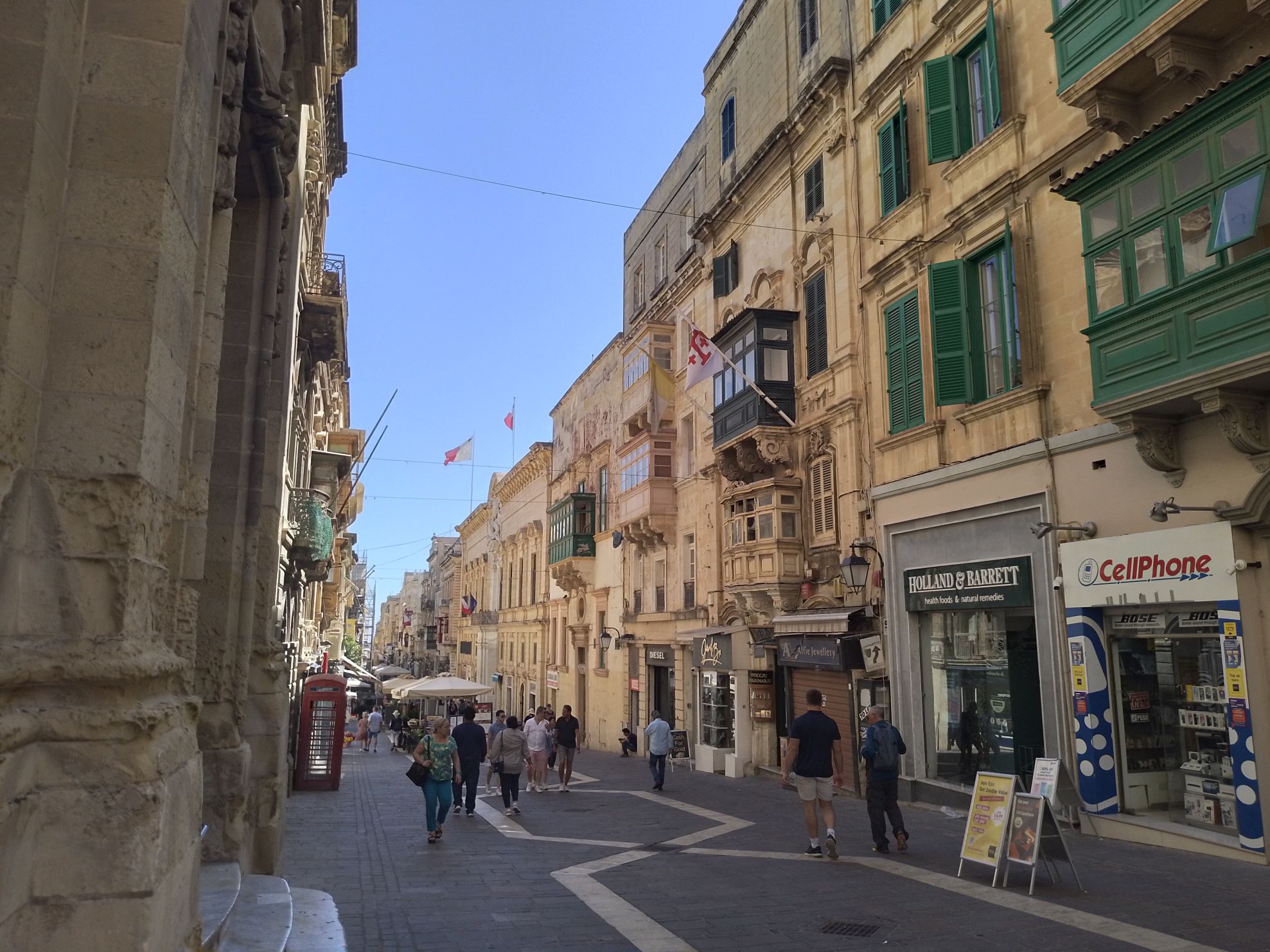 Ornate streets of Valletta. Photo / Mike Yardley
Ornate streets of Valletta. Photo / Mike Yardley
In the past decade, a vast array of regeneration projects have spruced up Valletta, reigniting the city’s spark, as if it’s awoken from a deep slumber. Italian starchitect Renzo Piano has revamped Valletta’s main City Gate. He built an open-air auditorium on top of the broken pillars and rubble of the WWII-bombed, nineteenth-century Opera House. The forts of St Angelo and St Elmo, both key during the Great Siege, have also been renovated. The latter houses the magnificent National War Museum, which does a great job whipping you through centuries of conquests. The Knights of St John became corrupt and fell out of public favour. Napoleon Bonaparte sniffed an opportunity and the French briefly seized control. But after his troops looted treasures from the churches, the Maltese rose in rebellion, appealed to the British for help, who booted the French out. Malta remained under British protection for 250 years, with Malta finally becoming an independent state in 1964.
I hadn’t previously appreciated what a critical role Malta played in WWII, but it was the most important base of operations in the entire Mediterranean for the Allies, repelling the supply convoys of Axis Powers bound for North Africa. I was engrossed by the story-telling regarding Operation Pedestal, which resulted in horrendous losses for the Allies. A flotilla of resupply ships desperately sought to reach Malta, with sufficient quantities of fuel and food to keep the island alive.
Heavy losses were sustained, but the last merchant carrier to make it to Valletta was SS Ohio, limping into port, battered and bruised after taking heavy fire. The Allied victory at El Alamein turned the tide of the war in North Africa and the entire island of Malta was awarded the George Cross for their bravery and sacrifice. There’s some great exhibits in the museum, like the Gloster Sea Gladiator biplanes that defended the island so stoutly. There’s also President Roosevelt's Jeep, "Husky," which was also used by General Eisenhower prior to the invasion of Italy, which was launched from Malta.
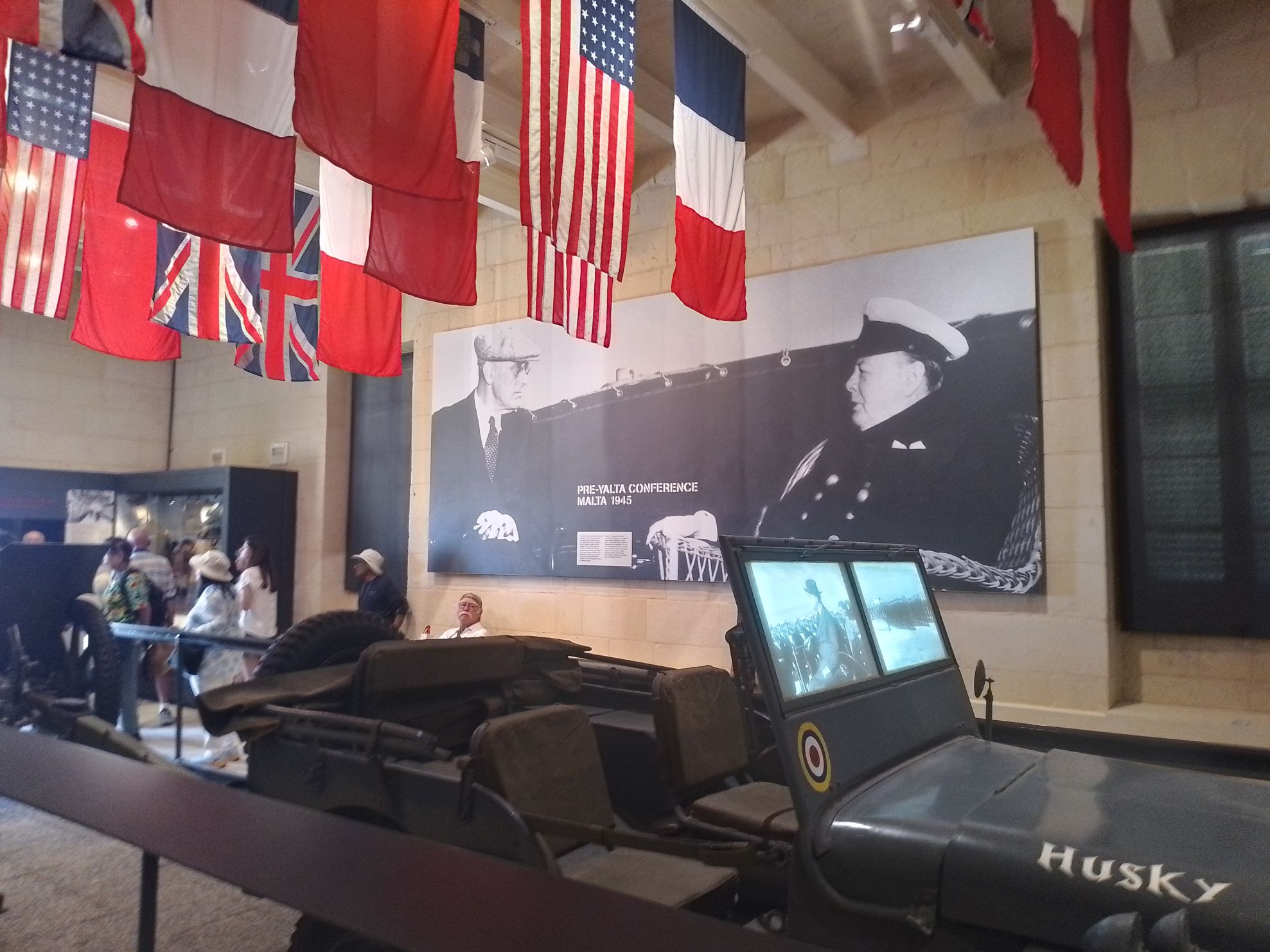 Roosevelt's Jeep, Husky, in Valletta. Photo / Mike Yardley
Roosevelt's Jeep, Husky, in Valletta. Photo / Mike Yardley
Gabriel also led us to one of Valletta’s essential experiences, the jewel-box of St John’s Cathedral. (It’s actually a Co-Cathedral, accorded the same stature as St. Paul’s Cathedral, which was built by the British.) What appears a rather functional-looking building from the outside is deceiving. Inside, this is one of the world's most exuberantly decorated Baroque cathedrals, completed in 1578 by the Knights of St. John as their own church. The nave is long and low, and every wall, pillar and rib is encrusted with rich dusty gold ornamentation, The floor is an iridescent patchwork quilt of coloured-marble tomb slabs – the final resting place for hundreds of knights and officers of the order.
The intricate vaulted ceiling positively dances with paintings by the Calabrian artist and knight, Mattia Preti that illustrate events from the life of St John the Baptist. Best of all, Caravaggio's only signed painting, his dramatic masterpiece, the Beheading of John the Baptist. The largest of all his paintings hangs above the very spot where the rogue artist, notorious for his raging temper, was stripped of his knighthood, following a brawl with a higher-ranked knight. He was later excommunicated by the Pope.
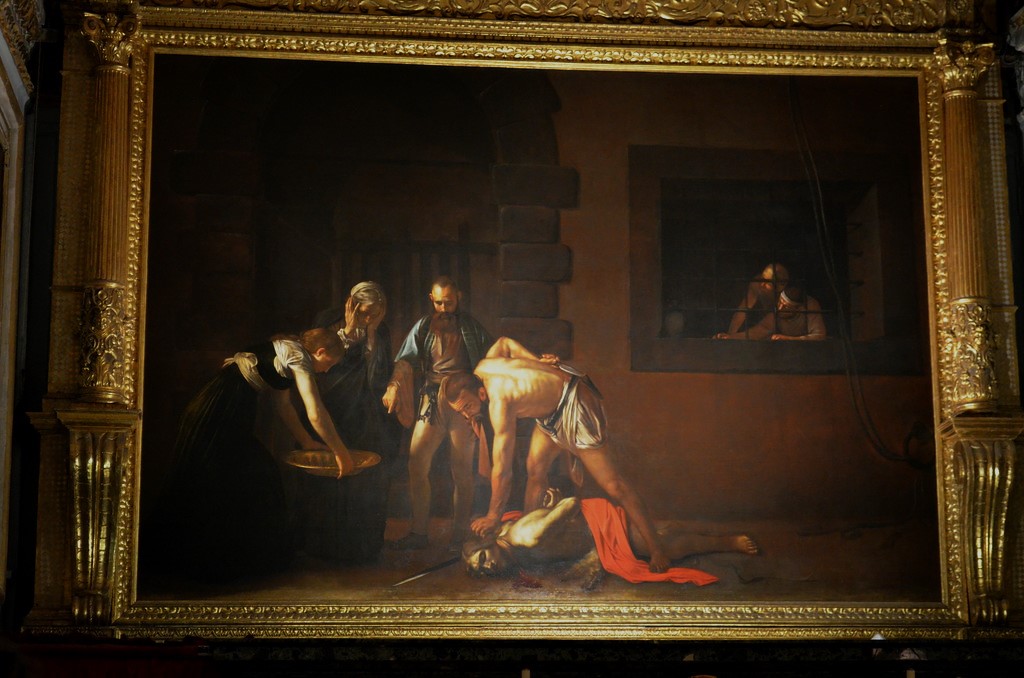 Beheading of St. John the Baptist by Caravaggio. Photo / Supplied
Beheading of St. John the Baptist by Caravaggio. Photo / Supplied
Passing by the Grand Masters Palace, which is now home to the Maltese President, and the residence where Napoleon Bonaparte stayed after taking control of Malta, we also headed to the Upper Barrakka Gardens, a glorious flower-filled park and lofty lookout. Previously, this is where the Knights of Malta would hone their fencing skills, but the big draw are the panoramic views of Grand Harbour and the neighbouring cities clustered around Valletta. A cannon is still fired every day at noon, at the Saluting Battery, as it has for two centuries, to help Ship Masters calibrate their onboard chronographers.
Great eats? My Insight Vacations tour included some splendid dining experiences including lunch at Nenu, an artisan bakery and restaurant, which has been showered with awards. A must-try is their traditional Maltese bread dough sprinkled with sesame seeds and served with an array of tasty toppings. One of the best combos is sliced potatoes, pork belly, ricotta, broad beans, rosemary and egg. Try the Blistered Octopus (cooked in garlic with a tomato, olive, and caper composition.) For the intrepid, rabbit stew is the national dish. Hot on its heels is traditional horse meat stew, in a red wine and thyme gravy. It was admittedly quite delicious! Nenu does amazing Date Fritters. This is a deep fried wine-base dough, filled with sweet dates, and served with ice-cream. So good!
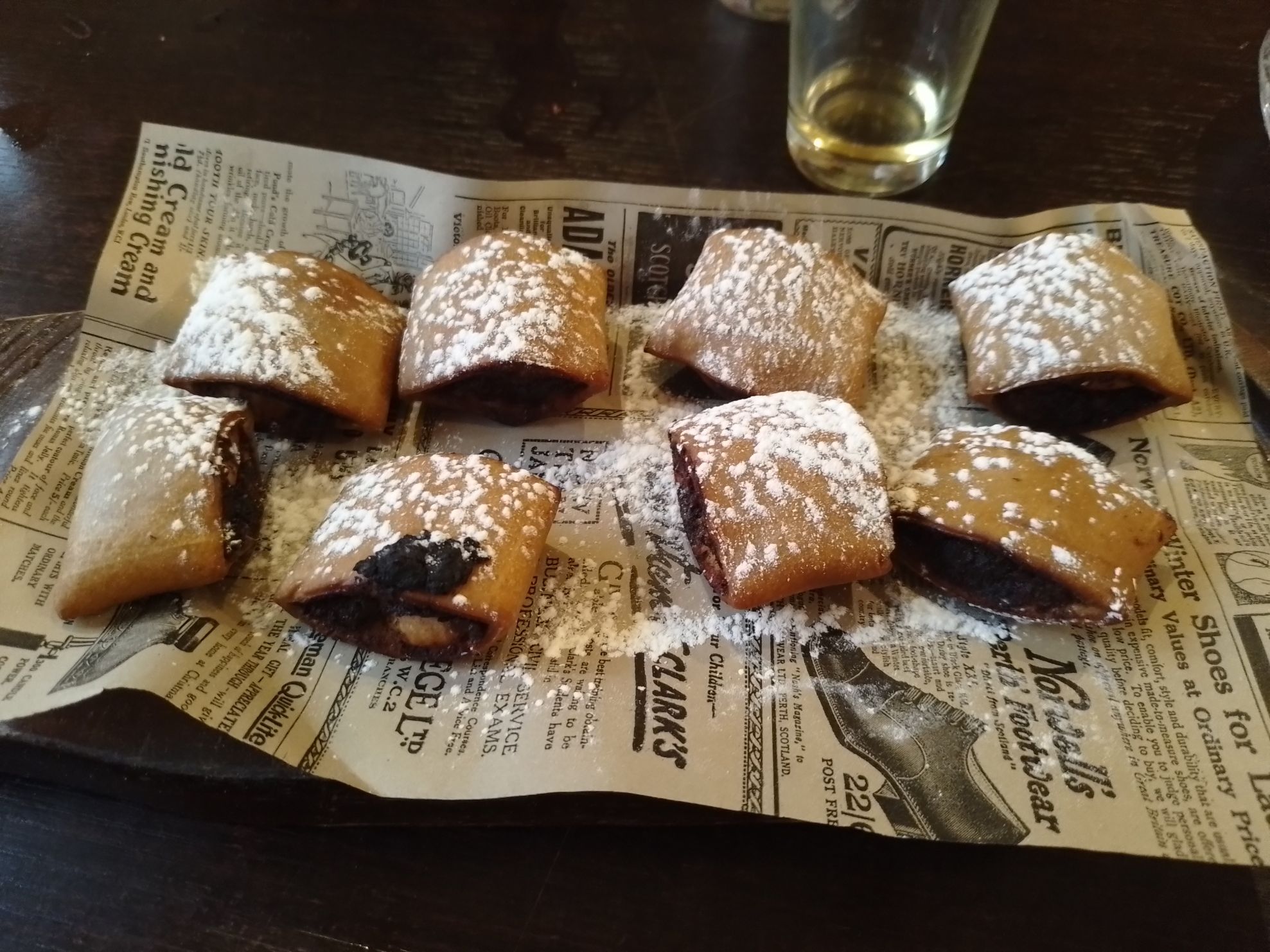 Date fritters at Nuno. Photo / Mike Yardley
Date fritters at Nuno. Photo / Mike Yardley
For agreeable street eats, ftira is the go-to that the locals binge on. This flattened sourdough bread has a thick crust and light, fluffy interior. A traditional ftira is typically stuffed with tomato paste, tuna, capers, onion, olives and peppered goat cheese. I’m a walkover for old-school coffee shops and Caffe Cordina is a Valletta classic, reaching back nearly 200 years. Their toasted ftiras are particularly good. For a sweet treat, order up a slice of Maltese Pudina. This bread pudding slice is loaded with walnuts, dried and candied fruit, and topped with jam and coconut flakes. Another sinfully good option is a slice of Diplomatica – a rum-soaked sponge with marzipan and hazelnut cream housed between two layers of puff pastry, topped with icing sugar.
Experience the majesty and mystery of Malta with Insight Vacations. Easy Pace Malta is 6-day premium guided tour showcasing Malta's finest features, including the golden-hued fortress capital of Valletta, the Silent City of Mdina, the waterfront strip of Sliema with optional excursions to Gozo Island and beyond. Superbly guided with local experts enriching the sightseeing, you will fall in love with Malta. For the best deals, head to https://www.insightvacations.com/en-nz/tours/easy-pace-malta
Mike Yardley is our resident traveller on Jack Tame Saturday Mornings.
Take your Radio, Podcasts and Music with you







